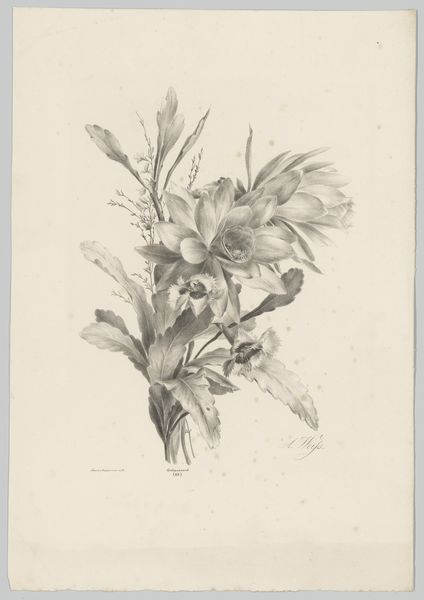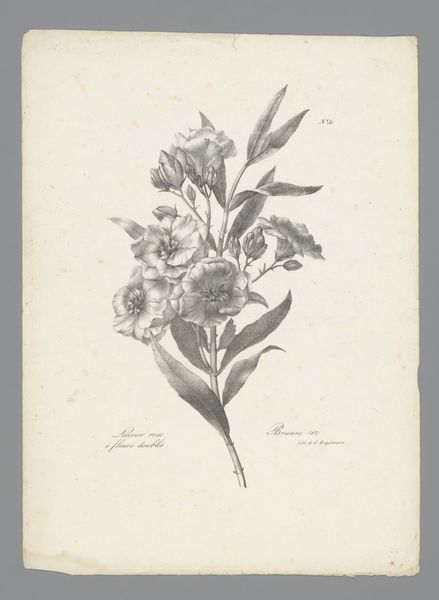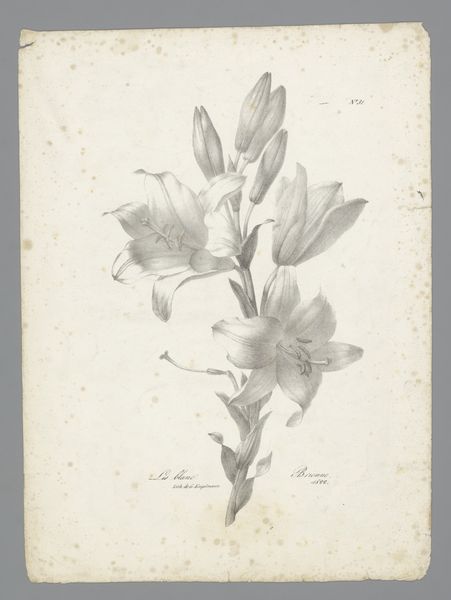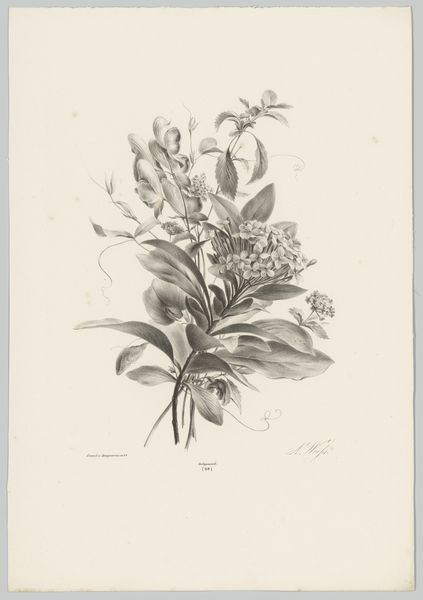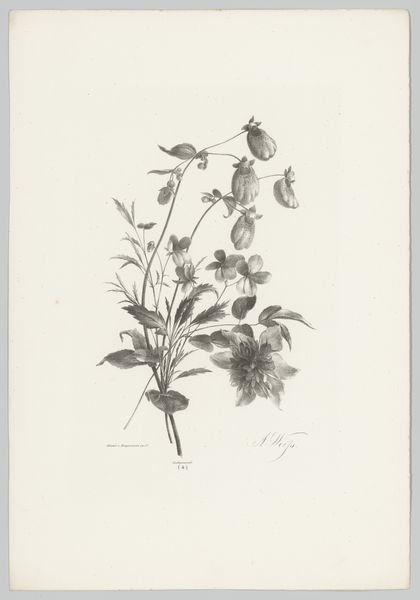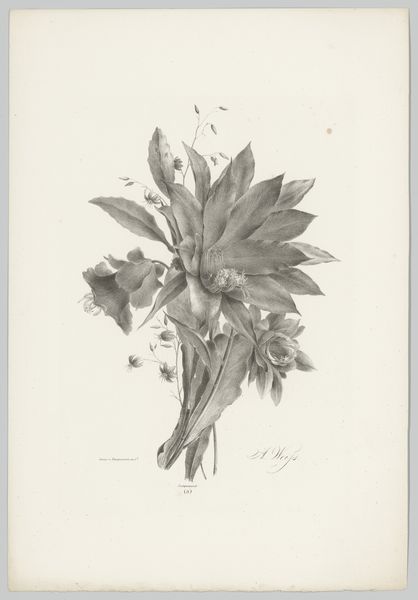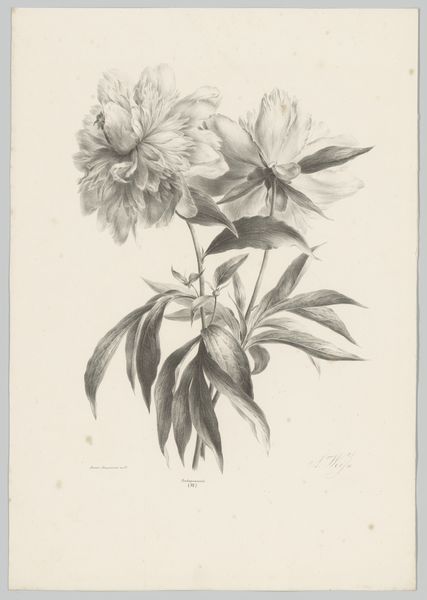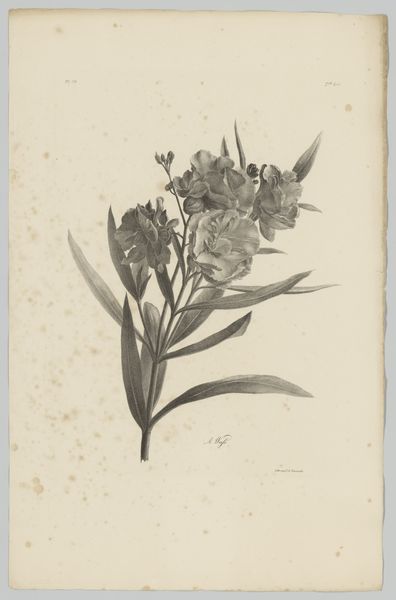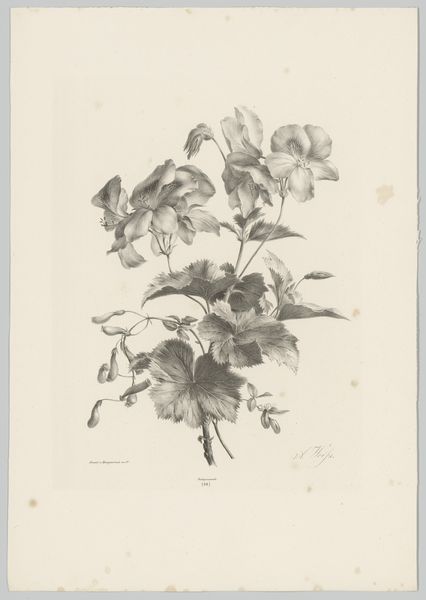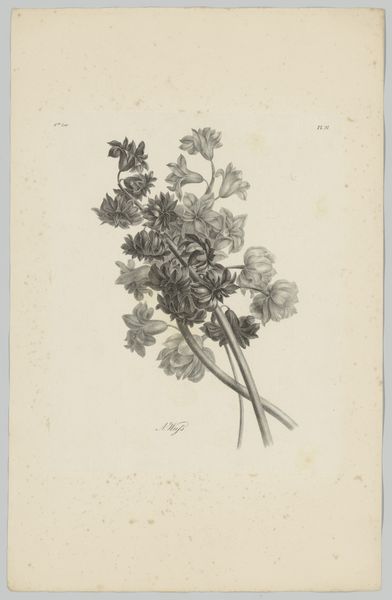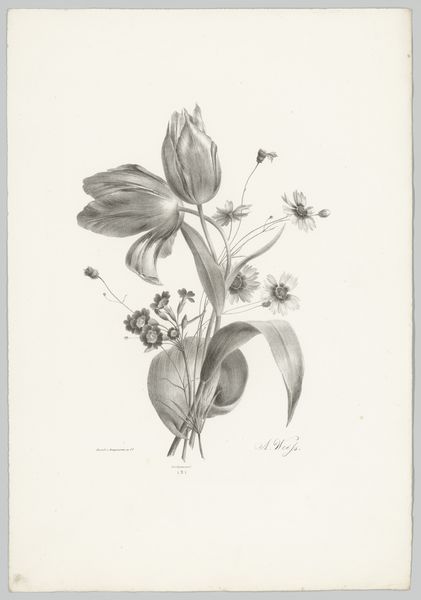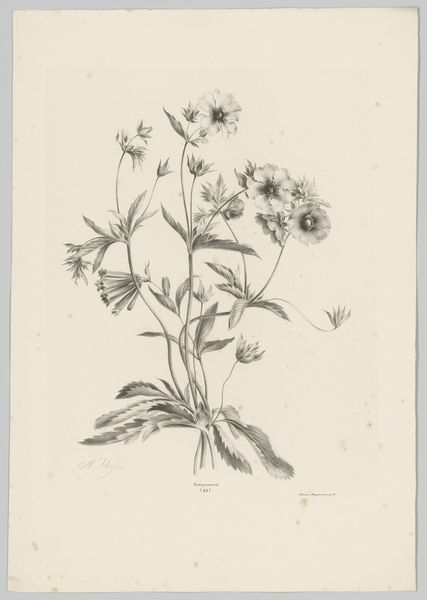
drawing, paper, pencil
#
drawing
#
paper
#
romanticism
#
pencil
#
botanical drawing
#
botanical art
Dimensions: height 430 mm, width 301 mm
Copyright: Rijks Museum: Open Domain
Curator: Before us, we have "Two Lilies," a pencil drawing on paper by Anton Weiss, dating back to 1836, now residing here at the Rijksmuseum. What are your initial thoughts? Editor: Austere elegance comes to mind. It's not just a study; it has an emotional restraint, almost Victorian in its controlled passion. Curator: The Romanticism movement certainly had that fascination with intensity tempered by reserve. It seems that the lilies, traditionally symbols of purity and innocence, are rendered here with a sort of quiet solemnity. Do you think the medium—pencil on paper—adds to that feeling? Editor: Absolutely. Pencil is so immediate, so vulnerable, yet the cross-hatching technique adds layers and volume. The delicate gradations achieve a remarkable sense of three-dimensionality and light. It's a dialogue between fragility and precision, as lilies might represent birth, passion, death... Curator: Fascinating. Weiss captured more than just the outward appearance. You mentioned earlier the connection with passion or death, while a botanical study might aim at being an objective record, Weiss is expressing feelings through this botanical art, like memory. The subtle detail, even in the unopened buds, hints at the unfolding drama of life and its ephemerality. Editor: Lilies, as royal emblems – the Fleur de Lis – have come to be adopted for mourning in certain Western cultures. Perhaps it’s a visual encoding of a collective emotion of remembrance? The very lightness of the sketch suggests a fading memory. Curator: A visual elegy, perhaps. It is wonderful how Weiss transformed what seems to be just an innocent, unpretentious rendering of nature into a poignant expression of the human condition. The artist's delicate hand evokes feelings and sensations in us that perhaps we did not even know we carried. Editor: Agreed. Seeing the world reflected in the details of a drawing, it does stir a shared sense of fragility and beauty, and memory in objects, long after the event.
Comments
No comments
Be the first to comment and join the conversation on the ultimate creative platform.
